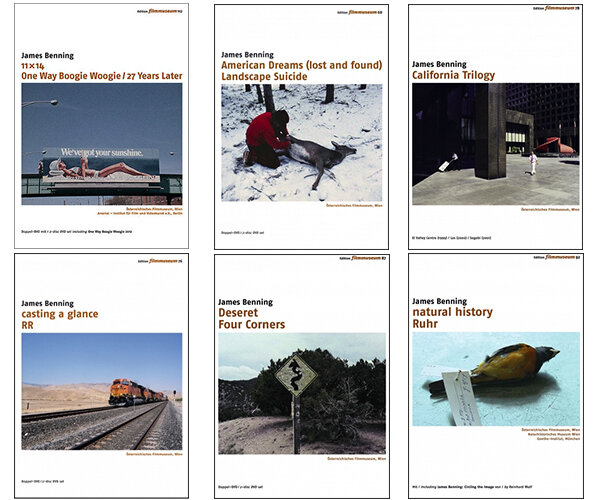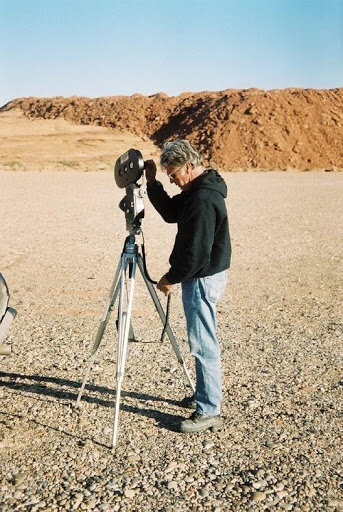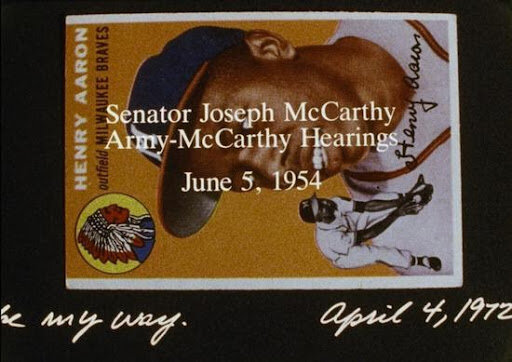GME PRESENTS THE FILMS OF JAMES BENNING NOW AVAILABLE AS DIGITAL SITE LICENSES
/GME Streamline is extremely proud to present an extensive collection of 14 of James Benning’s films (comprising 6 DVD editions), as well as CIRCLING THE IMAGE (2003), a documentary on Benning’s meticulous investigation of landscape locations, camera position, and shot duration. These collected works comprising 16mm films span a 30 year period from 1977 (11x14) through to 2007 (RR), and have been mastered in high quality digital format by Edition Filmmuseum - Vienna. Benning’s born-digital films date from 2009 (RUHR) through to 2014 (NATURAL HISTORY) and exemplify Benning’s shift from working with film grain to pixels. We now make each of these films available as DVD/DSL bundles on an exclusive basis to the North American university market.
James Benning is one of the foremost global practitioners of the experimental narrative form and of the structural film. A main focus of his work is an interest in American landscapes. In long sequences influenced by still photography and early cinema, Benning takes a meditative look at nature in its archaic state, and at the interventions of human technology. His movies consist of long, meditative takes set against sound landscapes.
Benning’s films are focused on seeing. About his work he has stated, "since I started making films, I've always tried to open a new narrative space from the juxtaposition of sound and image, or text and image - how the spectator experiences them, how they quote each other.” Benning's use of duration reflects his accord with Henry David Thoreau's passage from Walden that “No method nor discipline can supersede the necessity of being forever on the alert. What is a course of history, or philosophy, or poetry, no matter how well selected, or the best society, or the most admirable routine of life, compared with the discipline of looking at what is to be seen?"
◊
11x14 (1977) was James Benning’s first feature length film, which attracted the immediate attention of curators and critics. This movie situated the filmmaker in the history of American realist painting and photography, and established him as a proponent of the “New Narrative” movement. An extension in duration from his short film 8 ½ x 11 (1974), Benning employs approximately 60 shots in 11x14. He focuses upon landscapes of the Midwest, and captures the iconography of this region through repeated images and sounds of trucks and interstate highways, billboards and elevated trains, and silos and bales of hay. Protagonists frequently interact in the background of the image and their dialogue is deliberately muffled so that their motivations are obscured.
Benning wrote that “I wanted to make a narrative film concerned first with the elements of form and structure; that is, to make composition, color, texture and onscreen and offscreen space the real narrative, putting the story in the background.” Underscoring his interest in formal concerns, ONE WAY BOOGIE WOOGIE (1978) is titled after Piet Mondrian’s painting Broadway Boogie Woogie. In his similarly titled work, Benning combines the structural analysis of image, sound and narrative with autobiographical traces from around his hometown of Milwaukee. Benning’s remake of this film is represented in two additional versions on this DVD/DSL bundle, one from 2005, in which he attempts to replicate the shots from his earlier film, and the other from 2012, in which he locates and films buildings that resemble those that appeared in his first version. Both these later films reveal the inevitability of progress, and the demise of the Midwestern industrial landscape.
◊
AMERICAN DREAMS (LOST & FOUND) (1984) is the filmmaker's personal take on the history of the USA from 1954 to 1976, told through a complex and thought-provoking amalgamation of image, text and sound. James Benning describes this film as an "homage to my own coming of age": it combines his love of baseball with his interest in American history, politics and popular culture to achieve a formally complex and challenging take on the American Dream. In LANDSCAPE SUICIDE (1986), Benning effortlessly straddles the boundaries of narrative and documentary forms as he recounts two infamous murder cases that took place almost 30 years apart. The film circles around the relationship between landscapes, both physical and mental, and the violence that takes place in their midst: "the idea wasn't to dwell on violent acts, but to focus on how people look at themselves when they commit violent acts, and how they perceive what happened later,” says Benning.
◊
During this period, James Benning's films were primarily characterized by an ongoing investigation of the relationship between the image and the (spoken or written) word. DESERET (1995) and FOUR CORNERS (1997) are two key works representing the peak of this "text-image film" period. Both films are rigorous attempts to address, engage and come to terms with the history and geography of the United States, as seen through the prism of one particular part of the country. The beauty of the shimmering landscapes is contrasted with darker exposés of American history.
In DESERET (1995), Benning retells the history of America's Mormon State of Utah, by fusing more than 90 separate shots (comprising spectacular black & white and color landscape images), with a voiceover narrator quoting articles published in the New York Times between 1852 and 1992 that reference the violent struggles between Mormons, Native Americans, and the Federal Government, as well as nuclear/biological weaponry and toxic waste sites.
Benning's following film FOUR CORNERS (1997) is both a tribute to the famous region in the USA where four states converge (Arizona, Colorado, New Mexico, and Utah) and a portrait of four very different artists (impressionist pioneer Claude Monet, African-American folk artist Moses Tolliver, fictional Native-American wall-painter ‘Yukawa’, and Abstract Expressionist Jasper Johns). The voiceover narration deals with natural and man-made forces that have rent destruction upon the Native American population in this region.
◊
Produced at the junction of two millennia, the CALIFORNIA TRILOGY is James Benning's three-part topographical study of America's "Golden State". Looking to the past while investigating the present, the mathematician-turned-filmmaker condenses three distinct Californian landscapes into a total of 105 shots, each exactly 2½ minutes long. Formal restraint and compositional precision combine with ambient sound and social commentary to create a hypnotic journey across the 31st US State; from the Great Central Valley (EL VALLEY CENTRO, 1999) through greater Los Angeles (LOS, 2000) to the Californian wilderness (SOGOBI, 2001).
◊
In CASTING A GLANCE (2007), one artist pays tribute to another as James Benning offers his filmic paean to Robert Smithson's legendary "earthwork" sculpture, the Spiral Jetty. With RR (2007), his homage to the American railroad, the filmmaker brings an era to its close by going back to cinema's roots. Shot back-to-back over a period of two years, these works marked James Benning's farewell to analog filmmaking and together constitute the profound "last words" on the film medium by one of its most singular innovators.
◊
Since the late 1970s, James Benning's films have been a regular fixture at festivals in Germany and Austria, while frequent television broadcasts have helped expose his work to an even larger audience here than perhaps at home. Two films especially represent the products of this intercontinental relationship: RUHR (2009), Benning's first foray into digital filmmaking, is a modern-day "city symphony" dedicated to Germany's industrial Ruhr district; his later work, NATURAL HISTORY (2014), is an audiovisual portrait commissioned by Vienna's Natural History Museum.
Two extras are included. In JAMES BENNING: CIRCLING THE IMAGE (2004), documentary filmmaker Reinhard Wulf accompanies the artist for a week as he searches for locations for his film 13 LAKES (2003), and as he films the first two shots for his own movie. It shows the artist on the road, the unceasing search for suitable locations and motifs, Benning's relationship with the landscape and with the solitude involved in his work. This documentary illuminates in significant fashion the manner in which Benning’s films are composed of carefully-timed, long takes and precisely selected, fixed camera positions. Also included is a trailer entitled FIRE AND RAIN that Benning made in 2009 for the Viennale film festival in Vienna, Austria, the adopted hometown for his work outside of the United States.










